Our complete guide to the Great Otway National Park includes how to get there, things to do, how long to stay, FAQs about the region and so much more!
Few places around the world hold as much beauty and inspiration as the Great Otway National Park.
Covering a large part of the Great Ocean Road region in Victoria’s South West, nestled between the coastline of the Bass Strait in the South and Lake Corangamite to the North, it is home to beautiful waterfalls, white sand beaches, crashing waves, flora and fauna that dates back to the dinosaurs, a Redwood Forest, coastal and hinterland walks, mountain biking trails, small eateries in seaside towns and of course, the Great Ocean Road itself.
With so much natural beauty and diversity, we would argue that it’s one of the most incredible places not only in Victoria but all of Australia and that The Otways is by far the jewel in the crown of south-western Victoria.
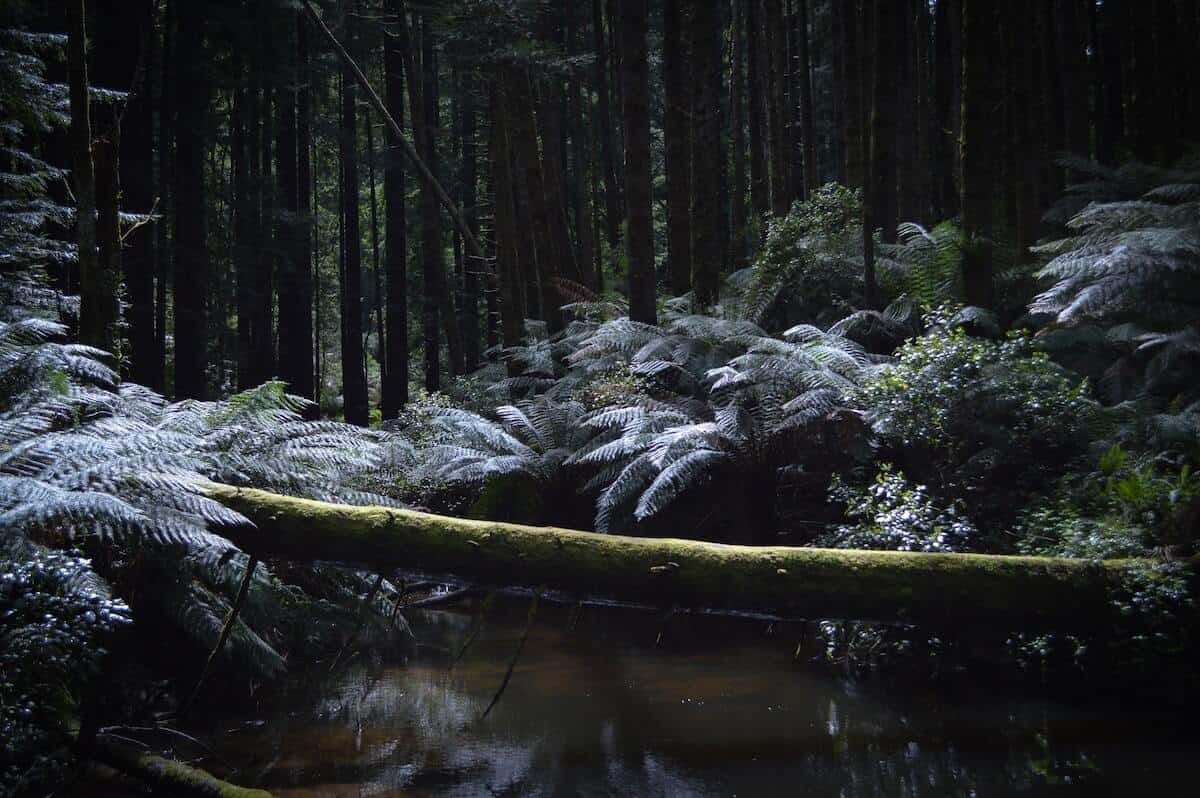
Disclaimer: Almost all posts on this site contain affiliate links. This means that if you click on any of the links in our Top Tips for Exploring the Great Otway National Park guide we may receive a small commission at absolutely no cost to you. Each post is carefully crafted to (hopefully!) answer all your questions and recommendations are made where we believe they will improve your trip and help with your planning. As such we thank you in advance should you decide to click, buy or book. Read our full Disclosure here.
This post was co-written with Chris & Laura from ChrisandLauraTravels
Table of Contents
Quick Facts About The Great Otway National Park (+ other FAQs About the Region)
- The Great Otway National Park stretches from Torquay, along the Surf Coast and up through the Otways hinterland and is managed by Parks Victoria.
- A whole host of Australian native animals call The Otways home, including
- koalas, kangaroos, ringtail possums, bats, glow worms, the Otway black snail, seals, echidnas, wombats and lots of different types of birds. If you visit at the right time you can even go whale watching to catch a glimpse of 25 different species of whales (inc. Southern Right Whale, Humpbacks, Orcas etc) as they migrate along the rugged coastline.
- There are a variety of caravan camping and holiday houses throughout Great Otway National Park. For luxurious options, take a peek at this Great Ocean Road accommodation guide and to make your camping in the Otways dream a reality, head to any of the camping and holiday parks at Wye River, Skenes Creek and Aire River East (or read this full guide to campgrounds on the Great Ocean Road).
- The Otway Rainforest (also known as the Otway Cool Temperate Rainforest) within the Great Otway National Park is a plant community that dates back 140 million years (that’s as far back as the dinosaurs!)
- Dinosaur bones were actually found in the region. The largest was found at Dinosaur Cove in 1991 and was a 43cm long femur that belonged to an ostrich-like dinosaur, known as Timimus hermani.
- You can swim at multiple beaches within the Great Otway National Park, with Apollo Bay and Blanket Bay offering sheltered coves, making them popular for families (although Blanket Bay is not patrolled by surf lifesavers, so be sure to take care).
- For those wanting to ride the waves in the Great Otway National Park, surfers can challenge themselves on the rips at the iconic Bells Beach near the start of the park, or Johanna Beach at the other end; and for those just finding their feet, Apollo Bay is a great place to start.
- Hiking opportunities (apart from the Great Ocean Walk & Surf Coast Walk discussed below) include:
– The 2.8km walk from the Lightstation to the Cemetary and Lookout; or
– The 10km Lighthouse to Aire River Walk through coastal scrubland to cliffs and beaches which is rated a ‘medium’ in intensity so be sure to pack snacks and water;
– The 1.6km Melba Gully Walk is beautiful but through one of the wettest forests in the State!; and
– The 4.7km Lake Elizabeth Walk – whose biggest draw is the elusive platypus that calls the lake home.
Where Is The Great Otway National Park?

Just shy of 3 hours south-west of Melbourne CBD, following the coast and the Great Ocean Road is where you’ll find the official entrance to The Otways – the shortest route being inland via Geelong and Birregurra.
But why take the short route when the long route is much nicer! Taking you a little further coastal and just over 3 hours via the Great Ocean Road is the best way to see the highlights and beautiful coastline of Bass Strait.
Some people choose to continue west past the Otway Ranges in search of other famous Australian landmarks like the 12 Apostles, Loch Ard Gorge, the Bay of Islands (and more) but there is a lot to see before you reach them!
Complete Guide to Touring the Great Ocean Road (Driving Tips, FAQs & More),
The ULTIMATE Interactive, Colour Coded Great Ocean Road Map; plus
Where to Stay – a guide to all the towns, villages, campsites & AirBnBs to base yourself on the GOR. And if you’re short on time – we’ve got the Best Day Trips Along the Great Ocean Road too!
How to get to The Otways
If you’re coming from Melbourne then the easiest way is to take the Monash freeway until you hit Birregurra-Forrest Rd and turn left, continue due south until you reach The Otways.
Conversely, if you’re already down south in Torquay, then continue following the Great Ocean Road until you reach Binns Rd, turning right towards Hopetoun Falls and the Redwood Forest.
How long should you stay in The Great Otway National Park?

We personally recommend at least 3-4 days as a minimum in the region for a few reasons. The weather can sometimes be a little unpredictable and can force you inside and you’ll lose a day of exploring.
The second is that this region is vast! It takes a while to drive between places and naturally you’ll want to rest, grab a coffee and have a bite to eat which can chew into valuable waterfall chasing time.
Our top tip is to plan your trip according to the places you really want to visit and group them together by location so that you tick off a few of those places in one go without having to travel large distances in between.
Top Things to do in The Great Otway National Park
The Redwood Forest
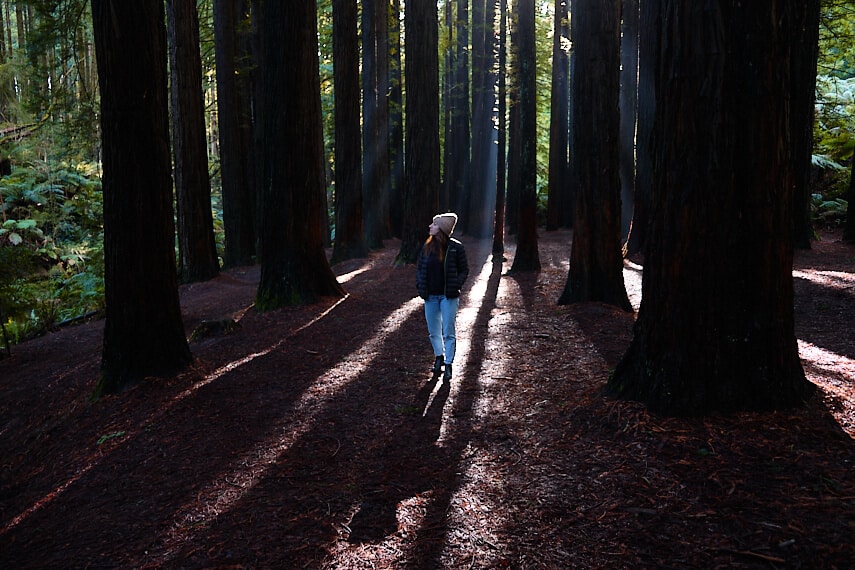
No doubt the star of the show and the quiet success story is the enormous Redwood Forest, better known as Sequoia Sempervirens (the technical name for the redwood trees).
This Redwood Forest dates back to 1936 when they were first planted here. Today the Sequoias in the Redwood Forest in Great Otway National Park are the tallest trees in the entire world (although not to be mistaken for their much wider base cousins, the Giant Sequoia, that you would see out in California which have a base some 40ft wide). The coastal redwood trees here are around half their size, although still mighty impressive.
Walking through the Redwood Forest here in The Otways is something of a dream state. Surrounded by beautifully lush green ferns that line the Aire River that runs right through the guts of the tall forests is both picturesque and dreamy.
The numerous fallen trees that act as walkways between the ferns forest and the redwood forest make for fantastic photographs and epic landscapes to walk through. It’s easy to see how a sense of calm can overwhelm anyone who walks through here.
Amenities at the Redwood Forest
There are no official public amenities accessible here at the Redwood Forest, other than a drop toilet on the hill behind the car park – make sure you bring both compostable toilet paper and hand sanitiser.
There is however a small gravel car park for about 10 or so cars and the main road acts as an overflow during the peak season.
The best time of year to visit the Redwood forest is coincidentally the quietest time of year in winter. The cool air and rain fills the Aire River and gives life to the undergrowth.
Chase the Prettiest Waterfalls in the Great Otway National Park.
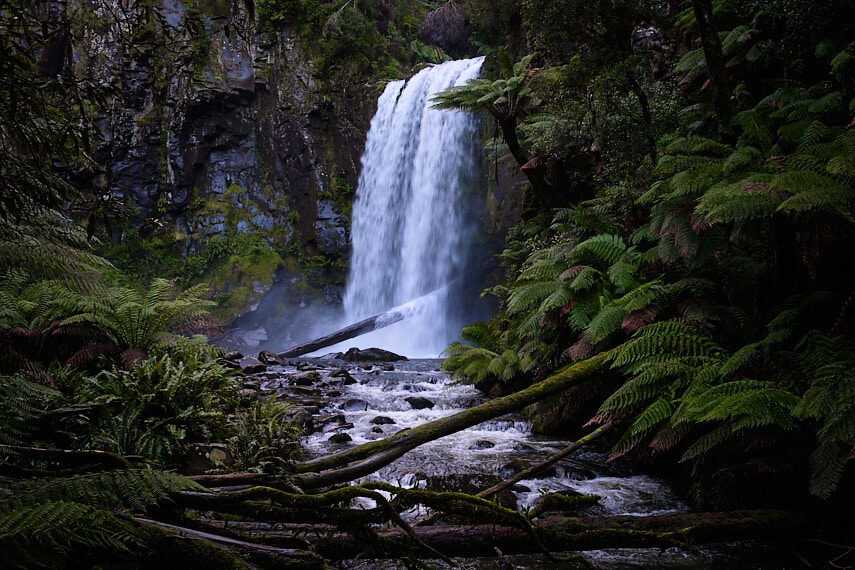
A photographer’s delight and in our opinion the prettiest waterfalls in all of Victoria, Hopetoun Falls took us both by surprise at just how architecturally perfect this little pocket of The Great Otway National Park is.
Winter is most certainly the best time to visit any waterfalls along the Great Ocean Road, as the fullness and power of the waterfalls are amplified after heavy downfall, making your long exposure shots so much crisper.
Visiting in Spring is also a close second as if you know Victoria’s weather (we do), Spring starts to see the temperatures heat up and early in Spring coupled with the occasional downpour, the runoff into the waterfalls can be just a powerful as winter but with less chance of mud!
Hopetoun Falls are only a 13-minute drive from the Redwoods so tackling these two giants in one day is more than achievable.
How to get to Hopetoun Falls
Make your way to the car park of the falls and descend the staircase through the gully of ferns that brings you down to the viewing platform at the base of the falls.
For the photographers in the house, the perfect leading lines of the Aire River lead you to the base of the falls with fallen, moss-covered branches from the trees above providing the ultimate view.
The falls plunge 30m from top to bottom into the Aire river which, eventually, will lead into Bass Strait.
It’s not overly recommended but if you’re feeling brave and adventurous you can traverse your way to the rocks that meet the base of the falls, just make sure you have a raincoat handy.
There are no public toilets near Hopetoun falls and disabled access is not possible.
Other Waterfalls in The Otways

There is a myriad of other waterfalls within the Great Otway national park easily accessible from walking tracks off the main road or by descending down steep fern gullies to the reveal below.
Beauchamp Falls and Triplet Falls are two that spring to mind that we love visiting every time. Little Aire Falls, Stevensons Falls, Mariners Falls and Phantom Falls are just a few of the other waterfalls near Lorne in the Otways, but you’d be better off reading our full guide to the Waterfalls on the Great Ocean Road (which includes how to get to each of them) to find out more!
Ultimate Melbourne Travel Guide (see, do, eat, save + more!)
The Best Time To Visit Melbourne (month by month guide)
Free Things to do in Melbourne CBD and Surrounds
The Best Day Trips & Weekend Getaways from Melbourne
Other Attractions in The Otways
If you’re feeling adventurous and keen to explore more of the Otways then there are a couple of must-see places hidden in the Otways region.
Otway Fly Treetop Adventure
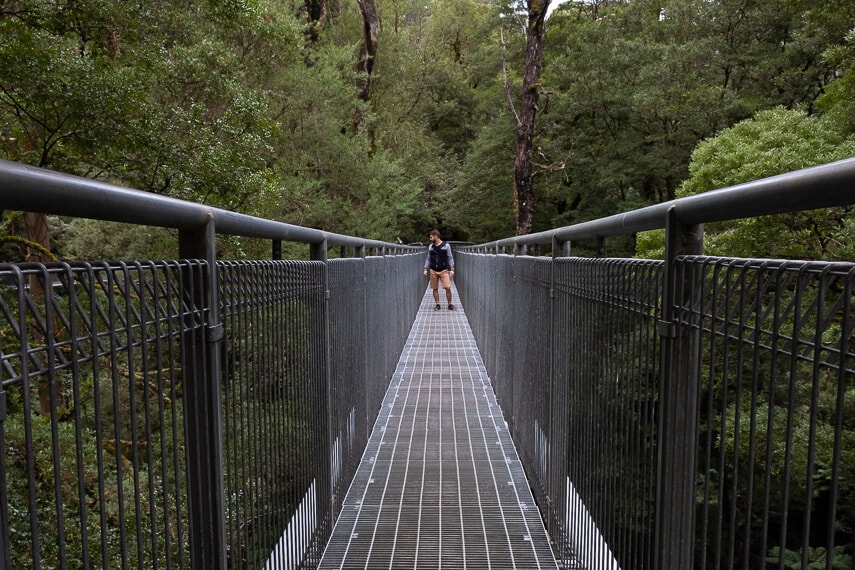
One of our favourite places to visit whenever we’re in the Otway Ranges includes the Otway Fly Tree Top Adventures.
If heights are your thing and you want to combine a couple of outdoor activities in one trip then you’re in the right place. The Otway Fly gives you the unique experience of walking in the canopies of the Otway’s trees some 30m up on the elevated walkway for 600m in length.
And for those seeking a different sort of adventure, then Otway Fly offers ziplining activities that let you soar through the Otway Forest Park on their ziplining tour that will take you approximately 2.5 hours to complete.
Entry into the Otway Fly and the standard treetop walk is around $25 for adults, but if you wish to go zip lining then it will set you back $120 if you purchase at the gate, and slightly cheaper if you pre-book online (which we recommend to ensure you get the time slot that works best for you.)
Explore Australia’s Oldest Surviving Lighthouse
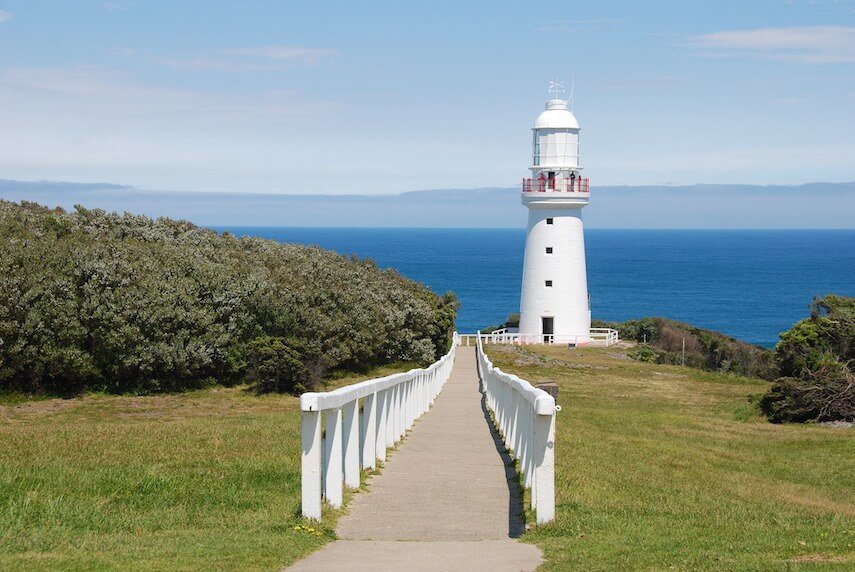
The history buff out there will get a real kick out of this one. Cape Otway lighthouse station is accessed at the lowest intersection of the Great Ocean Road and Lighthouse Rd in Cape Otway.
The beautifully scenic drive down lighthouse drive sees you pass places like Bimbi Park and Blanket Bay campground until reaching your final destination at Cape Otway lightstation. (Keep your eyes peeled on the trees that line the road – there may be some koalas munching on leaves or taking a nap as you cruise past!)
Australia’s oldest surviving lighthouse sits 90 metres above Bass Strait, was built in 1848 and was known colloquially as the Beacon of Hope.
For many migrants who travelled to Australia in search of employment and a better quality of life, Cape Otway was one of the first sights of land for these European settlers.
Unfortunately, this southwestern stretch of land along the coast is not without its perils. It was dubbed the Shipwreck Coast for good reason; many vessels were unable to predict or navigate the waters and the distance to land and many collided with the shallow reefs below, or ran into the side of the cliffs in unfavourable weather conditions like low fog and cloud.
Be sure to check out the lightkeepers cottage and the lighthouse lodge on your visit to Cape Otway.
Walk 100km+ On The Great Ocean Walk
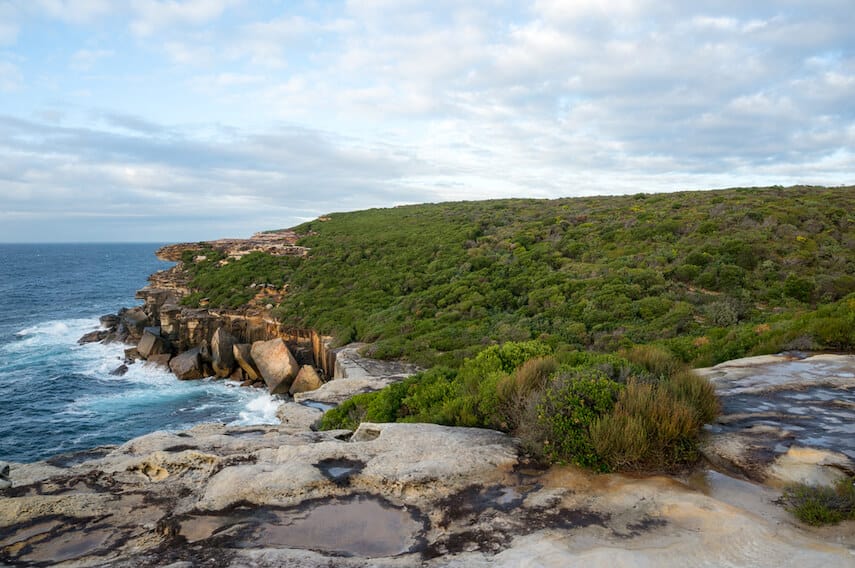
Sure you can drive the Great Ocean Road, but have you ever walked the entire length?
The iconic Great Ocean Walk is one of Victoria’s longest nature walks where hikers traverse 104km in around eight days – this one really is not for the faint of heart.
Designated campsites along the way as well as off-track accommodation are available to you for whichever you prefer. We personally recommend camping in the designated camping spots for the simple reason of being out and enjoying nature. But be aware they should be booked in advance (especially in high season)
The walk begins in Apollo Bay at the southern end of The Otways National Park and follows the coastline offering mostly ocean views, the chance to spot seals in Marengo Reef Marine Sanctuary, occasionally heading inland for times and ends at the Twelve Apostles Marine National Park in Port Campbell National Park.
Of all the sights to see here – be sure to keep an eye out for the flora and fauna. Koala’s often rest and eat in the Eucalyptus trees above throughout the walk, and you have the opportunity to see the world’s tallest flowering plant – the Mountain Ash in sections. Also, if you happen to be here in the winter months you’ll be able to follow the migratory path of Humpback whales and southern right whales.
The Surf Coast Walk
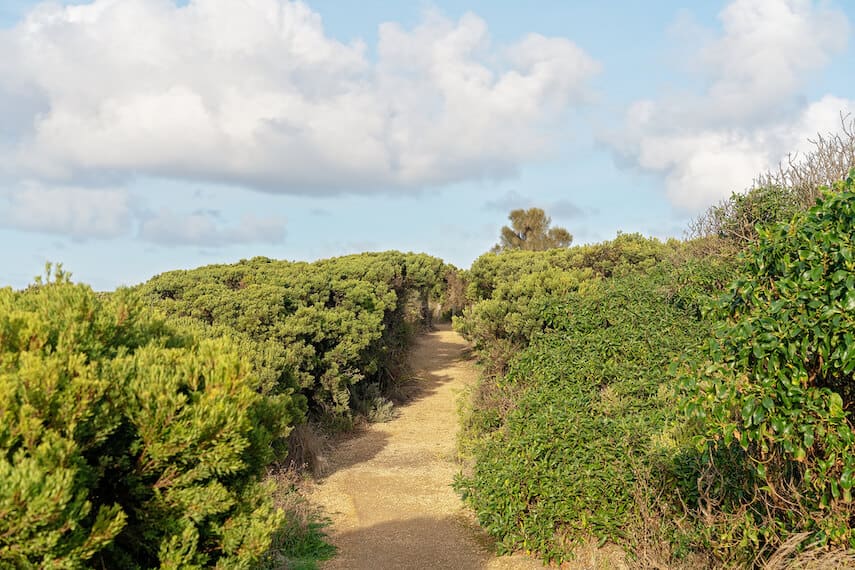
Starting at Torquay and stretching to Aireys Inlet, the Surf Coast Walk is a 44-kilometre trail with 12 trailheads, making it perfect for a short, or long waking experience. And is a great alternative to the full Great Ocean Walk if you don’t want to do a multi-day hike but still want a great walk along the rugged coastlines.
Maits Rest Rainforest Walk
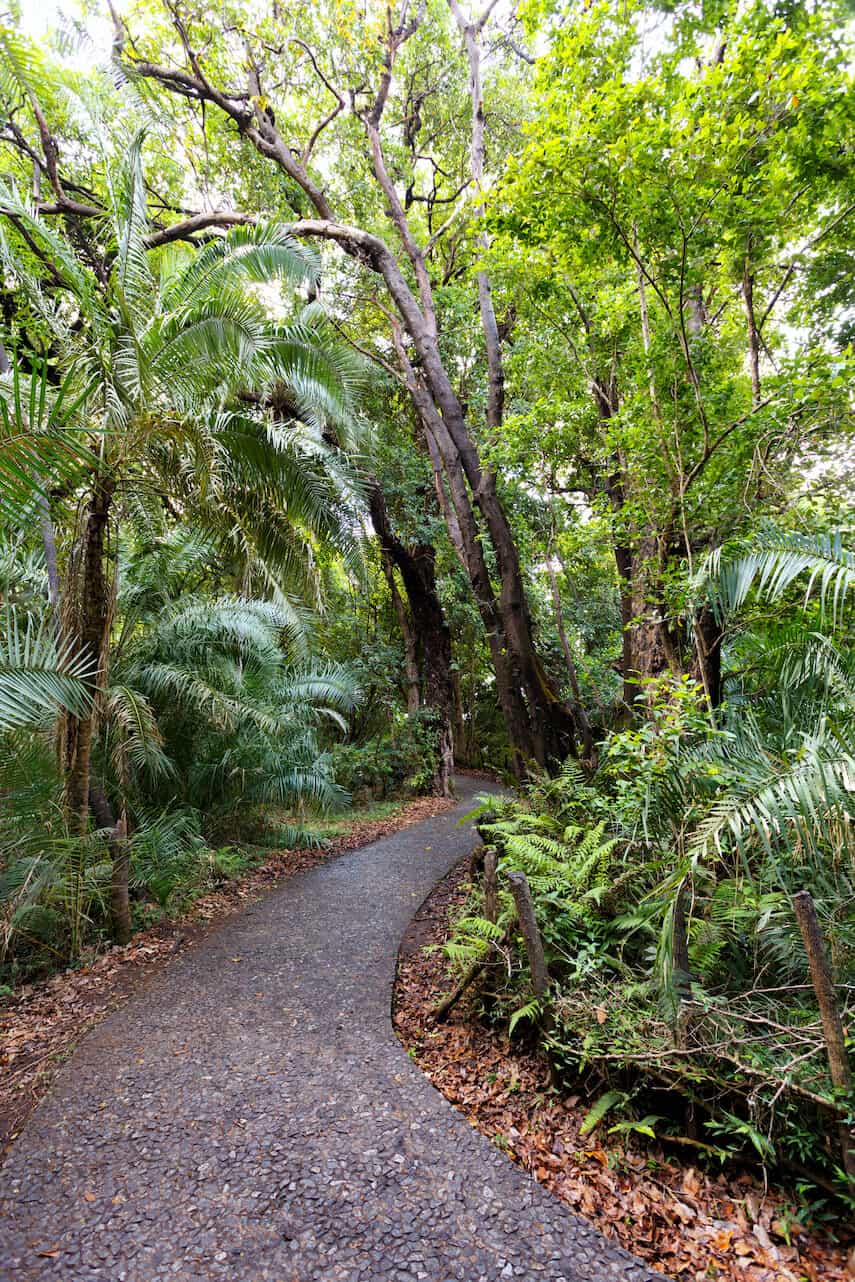
Located a 15-minute drive inland from Apollo Bay, Mait’s Rest is one of Victoria’s most visually stunning short walks.
This (recently renovated) 800m wooden and paved boardwalk built above the tree-fern gullies and moss-covered ancient trees is one of the most accessible ways to experience the unique flora and fauna of the rainforest – and is perfect for little legs that can’t quite manage longer walks making it one of the best family activities in the region.
Taking as little as 30 minutes to traverse the looped path, you’ll wander through beautiful fern gardens and towering myrtle beech trees up to 300 years old. We also recommend that you be on the lookout for some of the local inhabitants while you walk, including swamp wallabies, koalas, ring-tailed possums, grey kangaroos and glowworms! (For the glowworms, be sure to visit just after nightfall and keep your eyes at ground level, next to the track – and if you do see them, don’t touch them!)
Final thoughts on Exploring the Great Otway National Park
This beautiful part of the world and its temperate rainforest is such a special place to visit. Home to profound topography and climates super specific to Victoria’s west, you’ll be hard-pressed to find yourself bored when you immerse yourself in exploring the wonders of the Otway Ranges!
We hope you enjoyed our complete guide to exploring the Great Otway National Park on the Great Ocean Road Victoria. Let us know where you want to head to first in the comments below, or alternatively let us know if you have already visited this amazing part of the region and what your favourite part was.
And if you know someone planning to visit the Otways, or just needs a little push to organise a holiday on the Great Ocean Rd, be sure to share this post (and others!) with them using the share boxes below. Sharing is caring and we very much appreciate everyone who helps spread the word about how great the Great Ocean Road – and the towns along it – actually are!
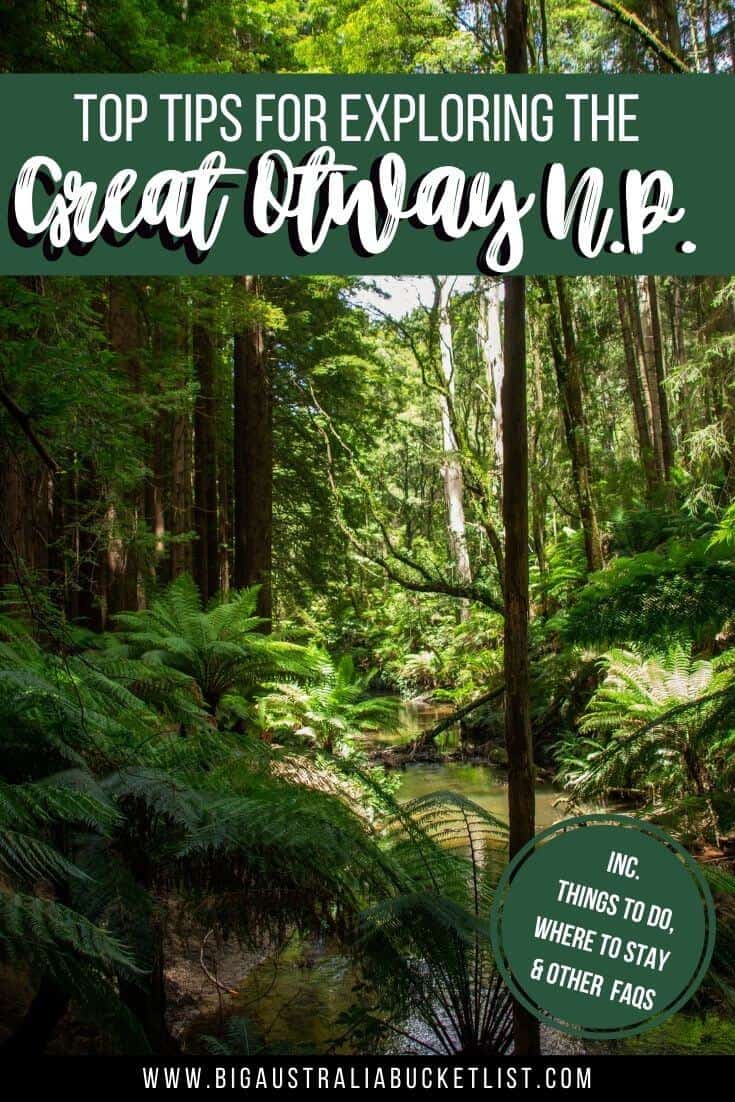
IF YOU ARE READY FOR SOME TRAVEL INSPIRATION YOU MIGHT BE INTERESTED IN THESE RECENT POSTS, TRAVEL ARTICLES, DESTINATION GUIDES, VISITOR GUIDES, TRAVELER RESOURCES, TRAVEL GEAR GUIDES AND RELATED POSTS ABOUT OTHER AMAZING PLACES AROUND AUSTRALIA:
- Test Your Aussie Knowledge: The Big Australia Trivia Quiz + 80+ Interesting Facts about Australia
- 100+ Things to do in Australia inc. Sydney, New South Wales, Great Barrier Reef in North Queensland, Mount Gambier in South Australia, Uluru in the Northern Territory & Phillip Island, Mornington Peninsula, Wilsons Promontory & Yarra Valley in Victoria!
- New South Wales: Top Things to do in Sydney (inc. The Sydney Opera House, Byron Bay & the Blue Mountains) & Best Places to visit in NSW
- General Australia Inspiration: Best Australian Travel Apps + Australia Travel Tips to Know Before You Go + The Ultimate Aussie Slang Guide
- Queensland News & Events: Things to do on the Gold Coast, Best Beaches in QLD, Great Barrier Reef & 50 Things to do in Outback Queensland
- South Australia: Best Places to Eat in Adelaide + 35+ Iconic Australian Foods to Eat There!

Hi There! Thanks for reading our travel guide to The Complete Guide to Exploring The Great Otway National Park. I just wanted to let you know that this post may contain affiliate links, which means if you purchase something after clicking a link, I may get a small commission – which is at absolutely no cost to you. If you enjoyed this article and are going to be searching for some of the things I mention anyway, I would love it if you could click through from the links above & thank you in advance! Read my full disclosure here.
This post was originally published at https://greatoceanroadguide.com.au/great-otway-national-park/ and is reproduced here with permission.
